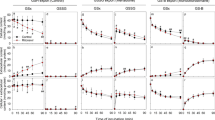Abstract
The development of multiple drug resistance (MDR) is a significant problem in epilepsy therapy. The primary factor responsible for antiepileptic drug (AEDs) resistance is the over-expression of the MDR gene product, P-glycoprotein (Pgp). To model a therapeutic approach for decreasing drug resistance in patients with intractable epilepsy, we established a model of coriaria lactone (CL) induced Pgp overexpression in rat astrocytes and administered a recombinant adenovirus Ad5-EGFP-shRNA1-U6 to deliver an anti-mdr1b short hairpin RNA (shRNA) for 5 days. We then investigated the gene-silencing effects of shRNA by quantitative real-time RT-PCR, Western-blot, and Rho123 accumulation assay. The results showed that over-expression of mdr1b and Pgp was successfully suppressed, the ability of intracellular Rho123 retention was increased, and drug efflux was decreased in the adenovirus treated astrocytes. In conclusion, MDR was reversed in rat astrocyte model. These findings may be favorable for developing new therapeutic strategies for treating intractable epilepsy.




Similar content being viewed by others
References
Tishler DM, Weinberg KI, Hinton DR et al (1995) MDR1 gene expression in brain of patients with medically intractable epilepsy. Epilepsia 36:1–6. doi:10.1111/j.1528-1157.1995.tb01657.x
Hannon GJ (2002) RNA interference. Nature 418:244–251. doi:10.1038/418244a
Aronica E, Gorter JA, Ramkema M et al (2004) Expression and cellular distribution of multidrug resistance-related proteins in the hippocampus of patients with mesial temporal lobe epilepsy. Epilepsia 45:441–451. doi:10.1111/j.0013-9580.2004.57703.x
Regina A, Koman A, Piciotti M (1998) Mrp1 multidrug resistance-associated protein & P-glycoprotein expression in rat brain microvessel endothelial cells. J Neurochem 71:705–715
Demeule M, Labelle M, Regina A et al (2001) Isolation of endothelial cells from brain, lung, and kidney: expression of the multidrug resistance P-glycoprotein isoforms. Biochem Biophys Res Commun 281:827–834. doi:10.1006/bbrc.2001.4312
Juliano RL, Ling V (1976) A surface glycoprotein modulating drug permeability in Chinese hamster ovary cell mutants. Biochim Biophys Acta 455:152–156. doi:10.1016/0005-2736(76)90160-7
Morrow CS, Cowan KH (1988) Mechanisms and clinical significance of multidrug resistance. Oncology 2:55–63
Ying W, Dong Z, Bing W et al (2003) A kindling model of pharmaco-resistant temporal lobe epilepsy in Sprague–Dawley rats induced by coriaria lactone and its possible mechanism. Epilesia 44:475–488. doi:10.1046/j.1528-1157.2003.32502.x
Hannon GJ, Rossi JJ (2004) Unlocking the potential of the human genome with RNA interference. Nature 431:371–378. doi:10.1038/nature02870
Hommel , Sears RM, Georgescu D (2003) Local gene knockdown in the brain using viral-mediated RNA interference. Nat Med 9:1539–1544
Andreas R, Christoph L, Marie-Cecile K et al (2006) Gene silencing in adult rat cardiac myocytes in vitro by adenovirus-mediated RNA interference. J Muscle Res Cell Motil 27:413–421. doi:10.1007/s10974-006-9087-0
Xu Ning, Segerman Bo, Zhou Xiaofu et al (2007) Adenovirus virus-associated RNAII-derived small RNAs are efficiently incorporated into the RNA-induced silencing complex and associate with polyribosomes. J Virol 81:540–549
Cole R, Vellis J (2001) Preparation of astrocyte, oligodendrocytes, and microglia cultures from primary rat cerebral cultures. In: Fedoroff S, Richardson A (eds) Protocols for neural cell culture. Humana Press Inc, 3:117–128
Kudo Y, Niwa H, Tanaka A (1984) Actions of picrotoxin and related compound on the frog spinal cord: the role of a hydroxyl group at the 6-position in antagonizing the actions of amino acids and presynaptic inhibition. Br J Pharmacol 81:373–380
Lei C, Linyu T, Tianhua Y et al. (2008) Reversal of Mdr1b-dependent multidrug resistance in a rat astrocyte model by adenoviral-delivered short hairpin RNA. Cell Mol Neurobiol. doi:10.1007/ s10571-008-9283-0
Lei C, Peimin F, Tianhua Y et al (2007) Construction of recombinant adenovirus vector for RNA interference with multidrug resistance MDR1 gene. J Sichuan Univ 38:913–917
Livak KJ, Schmittgen TD (2001) Analysis of relative gene expression data using real-time quantitative PCR and the 2(-Delta Delta C(T)). Meth Meth 25:402–408
Abbott NJ (2002) Astrocyte-endothelial interactions and blood-brain barrier permeability. J Anat 200:629–638. doi:10.1046/j.1469-7580.2002.00064.x
Sisodiya SM, Lin WR, Harding BN et al (2002) Drug resistance in epilepsy: expression of drug resistance proteins in common causes of refractory epilepsy. Brain 125:22–31. doi:10.1093/brain/awf002
Hua J, Mutch DG, Herzog TJ (2005) Stable suppression of MDR-1 gene using siRNA expression vector to reverse drug resistance in a human uterine sarcoma cell line. Gynecol Oncol 98:31–38. doi:10.1016/j.ygyno.2005.03.042
Shi Z, Liang YJ, Chen ZS et al (2006) Reversal of MDR1/P-glycoprotein-mediated multidrug resistance by vector-based RNA interference in vitro and in vivo. Cancer Biol Ther 5:39–47. doi:10.1158/1535-7163.MCT-05-0293
Wu BY, Liu RY, So KL et al (2000) Multi-lipofection efficiently transfected genes into astrocytes in primary culture. J Neurosci Meth 102:133–141. doi:10.1016/S0165-0270(00)00285-5
Lee G, Dallas S, Hong M et al (2001) Drug transporters in the central nervous system: brain barriers and brain parenchyma considerations. Pharmacol Rev 53:569–596
Davidson BL, Hilfinger JM, Beer SJ (1997) Extended release of adenovirus from polymer microspheres: potential use in gene therapy for brain tumors. Adv Drug Deliv Rev 27:59–66. doi:10.1016/S0169-409X(97)00017-3
Stege A, Priebsch A, Nieth C et al (2004) Stable and complete overcoming of MDR1/P-glycoprotein-mediated multidrug resistance in human gastric carcinoma cells by RNA interference. Cancer Gene Ther 11:699–706. doi:10.1038/sj.cgt.7700751
Michiharu K, Keizo F, Tatsuya T et al (2006) Relationship between excretion clearance of rhodamine 123 and P-glycoprotein (Pgp) expression induced by representative Pgp inducers. Biol Pharm Bull 29:779–784. doi:10.1248/bpb.29.779
Acknowledgements
This work was supported by the Country natural science foundation (30770749/c030307) and West China Hospital. We are grateful to thank Prof. Sheng-Fu Li, and postgraduate students Zhaoyang Ye and Lizhong Liu for technical assistance.
Author information
Authors and Affiliations
Corresponding author
Rights and permissions
About this article
Cite this article
Chen, L., Cheng, X., Tian, L. et al. Inhibition of P-glycoprotein Over-expression by shRNA-mdr1b in Rat Astrocytes. Neurochem Res 34, 411–417 (2009). https://doi.org/10.1007/s11064-008-9797-3
Received:
Accepted:
Published:
Issue Date:
DOI: https://doi.org/10.1007/s11064-008-9797-3




